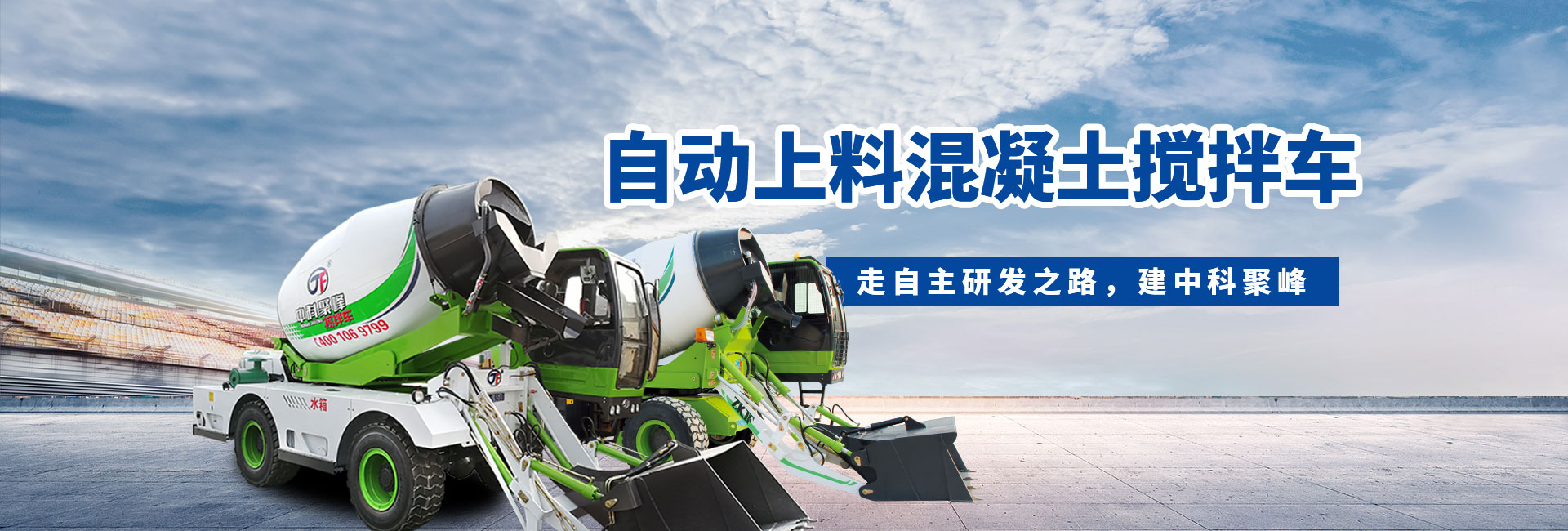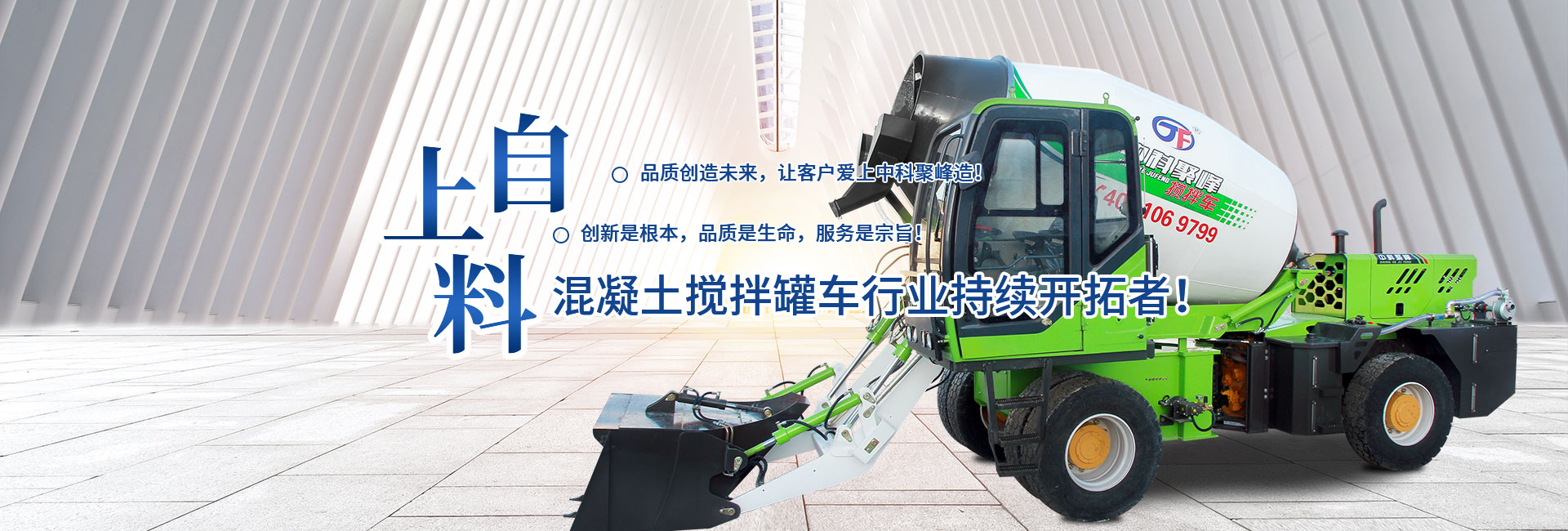(1) Manual transportation of trolley and dumper. It is usually used in the case that the concrete transportation volume is small and the transportation distance is close, but the transportation speed is the slowest.
(2)自卸汽車運輸。常用于混凝土運輸量較大而運距較遠的情況,車體為密封狀態,方便保溫保濕,主要在攪拌站應用。
(2) Transportation by dump truck. It is usually used in the case of large concrete transportation volume and long transportation distance. The car body is in sealed state, which is convenient for heat preservation and moisture preservation. It is mainly used in mixing plant.
(3)塔吊吊運。常用于大型水電工程的混凝土澆筑,通常吊斗出口至混凝土倉面間的高度不超過1.5~3.0m,但運輸速度較慢。
(3) Tower crane lifting. It is usually used in the concrete pouring of large hydropower projects. The height between the bucket outlet and the concrete warehouse surface is not more than 1.5 ~ 3.0m, but the transportation speed is slow.
(4)皮帶運輸機運輸。通常運輸時應以水平運送較好,且運輸速度不宜超過1.2m/s,以免因運速太快而造成混凝土分離現象。
(4) Belt conveyor transport. Generally, it is better to transport horizontally, and the transportation speed should not exceed 1.2m/s, so as to avoid the separation of concrete due to too fast transportation speed.
(5)混凝土泵送運輸。包括活塞式、風動式,常用于運輸不便且混凝土量較大的情況,運輸速度較快,但會受現場條件影響。
(5) Concrete pumping transportation. It includes piston type and pneumatic type, which are often used in the case of inconvenient transportation and large amount of concrete. The transportation speed is fast, but it will be affected by the site conditions.


混凝土澆筑方法的選擇混凝土澆筑時應根據現場條件及具體工程情況選取,通常需要計算混凝土分層間隔時間,其不應大于混凝土凝結時間。常用的混凝土澆筑方法主要分為全面分層、分段分層和斜向分層3種方式,全面分層常用于大體積混凝土;分段分層適用于結構厚度不大而面積或長度較大的情況;斜向分層多用于大體積混凝土,長度較大的結構,斜面角度一般小于或等于45°。
The selection of concrete pouring method should be based on the site conditions and specific engineering conditions. The interval time of concrete layering should be calculated, which should not be greater than the setting time of concrete. The commonly used concrete pouring methods are mainly divided into three ways: overall layering, segmented layering and oblique layering. Comprehensive layering is commonly used for mass concrete; segmented layering is suitable for the case of small thickness but large area or length; oblique layering is mostly used for mass concrete, and the angle of inclined plane is generally less than or equal to 45 ° for structures with large length.
混凝土振搗機械的選擇混凝振搗時應考慮選型機械的振搗范圍,并根據現場情況進行選擇。通常混凝土振搗器按其振動方式可分為內部式振動器和外部式振動器,前者又稱為插入式振動器,多用于振搗現澆基礎、柱、梁、墻等結構構件和后打體積基礎的混凝土,振搗時應避免碰撞鋼筋、模板、芯管、吊環或預埋件;后者又稱為平板式振動器、附著式振動器,常適合厚度不厚的板,用于構件表面振搗,振搗時外部式振動器的移動間距應保證振動器底板可以覆蓋到已振實部分的邊緣。
The selection of concrete vibration machinery should consider the vibration range of type selection machinery when concrete vibration, and select according to the site situation. Generally, the concrete vibrator can be divided into internal vibrator and external vibrator according to its vibration mode. The former is also known as plug-in vibrator, which is mainly used to vibrate the cast-in-place foundation, column, beam, wall and other structural components and the concrete of the later volume foundation. When vibrating, it should avoid colliding with reinforcement, formwork, core pipe, lifting ring or embedded parts; the latter is also called plate type vibrator and attached vibration When vibrating, the moving distance of the external vibrator should ensure that the bottom plate of the vibrator can cover the edge of the vibrated part.
混凝土養護方法的選擇混凝土養護方法應根據施工現場情況、施工條件及天氣狀況進行選擇,主要分為自然養護和熱養護。自然養護通常是在常溫下采用適當材料覆蓋混凝土,并采取澆水潤濕、防風防干、保溫防凍等措施所進行的養護,主要包括覆蓋澆水養護和塑料薄膜養護,前者可選用草簾、蘆席、麻袋、鋸木、濕土和濕砂等材料覆蓋;后者通常以塑料薄膜為覆蓋物。熱養護主要是將混凝土置于較高溫度條件下進行硬化,加速其硬化過程,一般包括蒸氣室養護和熱模養護。此外,冬季施工時應注意進行溫度計算。
The selection of concrete curing methods should be based on the construction site conditions, construction conditions and weather conditions, mainly divided into natural curing and thermal curing. The natural maintenance is usually the concrete covered with appropriate materials at room temperature, and the measures of watering, wind proof, anti drying, heat preservation and anti freezing are adopted. The curing mainly includes covering watering curing and plastic film curing. The former can be covered with straw curtain, reed mat, gunny bag, sawn wood, wet soil and wet sand; the latter is usually covered with plastic film. Thermal curing is mainly to harden the concrete at a higher temperature to accelerate its hardening process, which generally includes steam chamber curing and hot mold curing. In addition, temperature calculation should be paid attention to in winter construction.

 點擊撥打服務熱線:400-879-1999
點擊撥打服務熱線:400-879-1999


 首頁
首頁 電話
電話 導航
導航